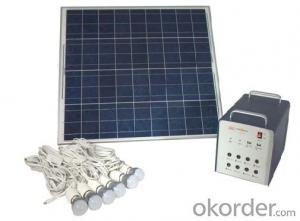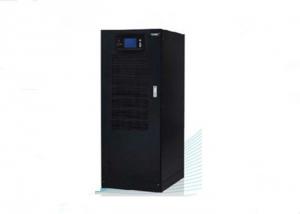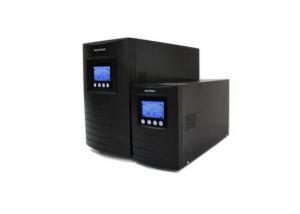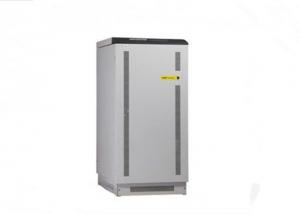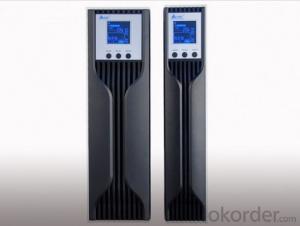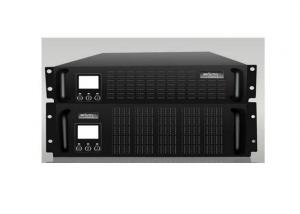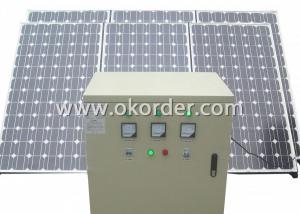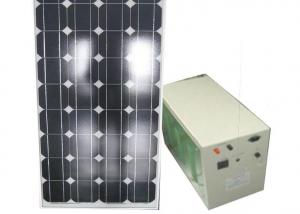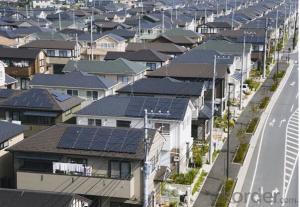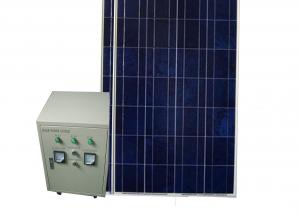Solar Energy Systems Brooklyn NY:True Double-Conversion Online UPS 2kVA at Low Prices
- Loading Port:
- China main port
- Payment Terms:
- TT OR LC
- Min Order Qty:
- 20 carton
- Supply Capability:
- 10000 carton/month
OKorder Service Pledge
Quality Product, Order Online Tracking, Timely Delivery
OKorder Financial Service
Credit Rating, Credit Services, Credit Purchasing
You Might Also Like
Low price of true double-conversion online ups 2kva

| Model | RT-1KS | RT-1KL | RT-2KS | RT-2KL | RT-3KS | RT-3KL |
| Rated power | 1KVA | 2KVA | 3KVA | |||
| Display | LED or LCD, depends on user's choice | |||||
| INPUT | ||||||
| Voltage | 110V:80~138VAC/220V:115~300VAC | |||||
| Frequency | 110V:46~54Hz or 56~64Hz/220V:40~60Hz/Adjustable by software | |||||
| OUTPUT | ||||||
| Voltage | 110V:110±2%VAC/220V:220±2%VAC | |||||
| Frequency | 110V:46~64Hz/220V:46~54Hz/Same as AC(AC mode) | |||||
| 110V: 50 or 60±0.2Hz/220V:50±0.2Hz(Batt. mode) | ||||||
| Wave form | Sine wave | |||||
| BATTERY | ||||||
| QTY. & capacity of battery | 12V/7.5AH*3pcs | ————— | 2V/7.5AH*8pcs | ————— | 12V/7.5AH*8pcs | ————— |
| Nominal DC input voltage | ————— | 36VDC | ————— | 96VDC | ————— | 96VDC |
| Transfer time | 0 ms | |||||
| Overload capability | 110%~150% for 30% seconds then transfer to bypass output, 150% above for 300 milliseconds. | |||||
| ENVIRONMENT | ||||||
| Environment of performance | Temperature 0℃~40℃, Humidity 20%~90% | |||||
| PHYSITAL | ||||||
| (kg) / Net weight (kg) | 110V:19 220V:16.3 | 110V:11.8 220V:9.1 | 38.1kg(10.3kg for US+27.8kg for battery pack) | 110V:14.2 220V:11.5 | 39kg(11.2kg for US+27.8kg for battery pack) | 110V:15 220V:12.3 |
| (mm) / Unit dimention (mm) | 441*445*88 | 441*445*88(*2 sets, there into 1 set for battery pack) | 441*445*88 | 441*445*88(*2 sets, there into 1 set for battery pack) | 441*445*88 | |
| MANAGEMENT | ||||||
| Interface | 110V:USB+RS232 220V:RJ45/11+RS232, Intelling slot selectable. | |||||

Features
1. Pure sine wave output
2. MCU dual-core controlled
3. G-sensor autorotation LCD display
4. Extensible battery pack
5. Powerful charging function(Self settable)
Field of application
Applicable to household PC, office equipment in enterprise and institution, small communication switchboard and server, LAN device, commercial POS machine, small workstation and its peripheral equipment,banking terminal, ATM system and so on.
- Q: Can solar energy systems be used for powering wastewater or sewage treatment plants?
- Yes, solar energy systems can be used for powering wastewater or sewage treatment plants. Solar panels can convert sunlight into electricity, which can be used to power various operations within the treatment plants such as pumps, aeration systems, and other equipment. This renewable energy source helps reduce reliance on traditional power sources and lowers the overall carbon footprint of these facilities.
- Q: What is the impact of roof pitch on the performance of solar panels?
- The impact of roof pitch on the performance of solar panels is significant. The angle or pitch of the roof determines the amount of sunlight that the solar panels receive and the efficiency of their energy production. A roof with a steeper pitch can be advantageous as it allows the panels to capture more sunlight throughout the day. However, a pitch that is too steep may cause the panels to receive less sunlight during certain times of the day or year. Therefore, finding the optimal roof pitch for solar panels is crucial to maximize their performance and energy generation.
- Q: Can a solar energy system be installed in an off-grid location?
- Yes, a solar energy system can be installed in an off-grid location. In fact, off-grid locations are ideal for solar energy systems as they often lack access to traditional sources of electricity. Off-grid solar energy systems consist of solar panels, batteries, charge controllers, and inverters. The solar panels collect sunlight and convert it into electricity, which is then stored in batteries for use during times when the sun is not shining. The charge controller regulates the flow of electricity between the solar panels and the batteries, while the inverter converts the stored DC electricity into AC electricity for use in powering appliances and devices. These components work together to provide a reliable and sustainable source of electricity in off-grid locations, reducing dependence on fossil fuels and minimizing environmental impact.
- Q: How can solar energy systems reduce electricity bills?
- Generating free and renewable energy from the sun, solar energy systems have the potential to significantly decrease electricity bills. Unlike conventional electricity sources like fossil fuels, solar energy doesn't necessitate ongoing expenses for fuel or maintenance. Once installed, a solar energy system can produce electricity for many years, offsetting a substantial portion of a household's or business's electricity usage. By utilizing the power of the sun, solar energy systems can generate electricity when it is most in demand during daylight hours. Consequently, solar energy can directly compensate for electricity consumption during peak times, diminishing the need to draw power from the grid. Consequently, electricity bills can be drastically reduced or even eliminated, depending on the size and efficiency of the solar energy system. Furthermore, solar energy systems often provide homeowners and businesses with the opportunity to take advantage of numerous financial incentives and programs. These incentives may include tax credits, grants, or policies such as net metering, which allows surplus solar energy to be fed back into the grid and credited towards future electricity bills. These incentives can augment the financial advantages of installing solar energy systems, making them even more cost-effective. Additionally, solar energy systems offer long-term savings. As the cost of electricity from conventional sources continues to escalate, solar energy remains a steadfast and predictable investment. By securing a fixed cost for electricity generation, solar energy systems safeguard against future price hikes and inflation, ensuring that electricity bills remain low and foreseeable for years to come. Overall, solar energy systems provide a sustainable and economically viable solution for reducing electricity bills. By tapping into the abundant and free energy of the sun, households and businesses can enjoy substantial savings, financial incentives, and long-term stability in their energy costs.
- Q: How do solar energy systems impact energy policy and regulation?
- Solar energy systems have a significant impact on energy policy and regulation by promoting the adoption of renewable energy sources and reducing dependence on fossil fuels. Governments and regulatory bodies often implement policies and regulations that incentivize the installation and use of solar energy systems, such as feed-in tariffs or tax credits. This helps to accelerate the transition to clean energy and achieve sustainability goals. Additionally, solar energy systems can influence the development of grid infrastructure and energy storage technologies to accommodate the intermittent nature of solar power, leading to a more resilient and decentralized energy system.
- Q: Can solar energy systems be installed on industrial facilities?
- Yes, solar energy systems can definitely be installed on industrial facilities. In fact, many industries are increasingly adopting solar power as a sustainable and cost-effective energy solution. Installing solar panels on industrial facilities can help reduce electricity costs, lower carbon emissions, and enhance the overall energy efficiency of the operations.
- Q: Can solar energy systems be used in areas with limited access to transportation?
- Yes, solar energy systems can be used in areas with limited access to transportation. Solar energy systems are highly versatile and can be installed in remote locations where transportation infrastructure may be limited or non-existent. These systems can be designed to function independently of the grid, providing a reliable source of electricity for communities and individuals in remote areas. Additionally, advancements in solar technology have led to the development of smaller and more portable solar systems, making it easier to transport and install them in areas with limited access to transportation.
- Q: Can a solar energy system be installed in an area with limited sunlight?
- Even in areas with limited sunlight, it is still possible to install a solar energy system. Although solar panels are most effective in areas with plenty of sunlight, they can still produce electricity in areas with limited sunlight. Even on days when it is cloudy or overcast, solar panels can still capture and convert some sunlight into electricity. Furthermore, advancements in solar technology have enhanced the efficiency of solar panels, enabling them to generate power even in low-light conditions. However, it is essential to note that the overall energy output of a solar energy system will be lower in areas with limited sunlight compared to areas with abundant sunlight. Therefore, it is recommended to conduct a feasibility study to evaluate the potential energy output and cost-effectiveness of installing a solar energy system in an area with limited sunlight. When assessing the viability of installing a solar energy system in such an area, factors such as the angle and orientation of the panels, shading from surrounding structures or trees, and the local climate should also be taken into consideration.
- Q: Can solar energy systems be used for powering electric gates or fences?
- Yes, solar energy systems can certainly be used to power electric gates or fences. Solar panels can be installed to harness sunlight and convert it into electricity, which can then be used to operate the gates or fences. This renewable energy source offers a sustainable and cost-effective solution for powering such systems, reducing reliance on traditional grid electricity and contributing to environmental conservation.
- Q: How do solar energy systems impact energy independence?
- Solar energy systems can greatly contribute to energy independence by reducing reliance on fossil fuels and the traditional energy grid. By harnessing the power of the sun, individuals and communities can generate their own clean and renewable energy. This reduces the need to import energy from other sources and helps to decrease dependence on centralized power systems. Solar energy systems provide a sustainable and decentralized alternative, empowering individuals and communities to take control of their energy production and reduce their carbon footprint.
Send your message to us
Solar Energy Systems Brooklyn NY:True Double-Conversion Online UPS 2kVA at Low Prices
- Loading Port:
- China main port
- Payment Terms:
- TT OR LC
- Min Order Qty:
- 20 carton
- Supply Capability:
- 10000 carton/month
OKorder Service Pledge
Quality Product, Order Online Tracking, Timely Delivery
OKorder Financial Service
Credit Rating, Credit Services, Credit Purchasing
Similar products
Hot products
Hot Searches
Related keywords
















